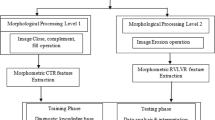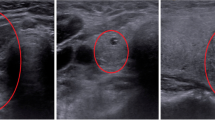Abstract
In the real world, the detection of heart diseases is a challenging process. For detecting testicular anomalies with or without congenital heart disease, 2D ultrasound images through a computer-aided diagnostic support system are favorable. Existing work achieves classification through an adaptive neuro-fuzzy inference system (ANFIS) with an F1 score of 0.9673. Although the classification accuracy is good, there are some small changes in detection, leading to misclassification in some miniature valve detection scenarios. To increase the efficiency, a multilayer deep detection perceptron that over performs an ANFIS, a radial basis function neural network, and a multilayer back propagation neural network is proposed. It has the capability of optimizing the classification with higher performance accuracy. During the valuable phases of processing, classification of prenatal ventricular septal defects was achieved with help of the novel multilayer perceptron. Further, gradient descent is used to increase efficiency and improve the filter rate by using a linear algebra activation function. Both backpropagation and the least squares ensured that the smallest error occurred in classification and detection. The accuracy of this proposed method reaches 98%.












Similar content being viewed by others
References
Karar ME, El-Khafif SH et al (2017) Automated diagnosis of heart sounds using rule-based classification tree. J Med Syst 41:60
Deperlioglu O, Kose U, Gupta D et al (2020) Diagnosis of heart diseases by a secure internet of health things system based on autoencoder deep neural network. Comput Commun 162:31–50
Sun S, Wang H et al (2014) Segmentation-based heart sound feature extraction combined with classifier models for a VSD diagnosis system. Exp Syst Appl 41:1769–1780
Zhang J, Yin Z et al (2016) Pattern classification of the instantaneous cognitive task-load through gmm clustering, laplacian. IEEE/ACM Trans Comput Biol Bioinf 14:947–965
Li Z, Xia Y et al (2017) Brain voxel classification in magnetic resonance images using niche differential evolution based Bayesian inference of variational mixture of Gaussians. Neurocomputing 269:47–57
Ortiz-Rosario A, Adeli H et al (2017) MUSIC-Expected maximization gaussian mixture methodology for clustering and detection of task. Behav Brain Res 317:226–236
Wang ZH et al (2020) Heart sound signal recovery based on time series signal prediction using a recurrent neural network in the long short-term memory model. J Supercomput 76:8373–8390
Vidhya K, Shanmugalakshmi R (2020) Modified adaptive neuro-fuzzy inference system (M-ANFIS) based multidisease analysis of healthcare Big Data. J Supercomput 76:8657–8678
Hameed AZ, Ramasamy B, Shahzad MA et al (2021) Efficient hybrid algorithm based on genetic with weighted fuzzy rule for developing a decision support system in prediction of heart diseases. J Supercomput. https://doi.org/10.1007/s11227-021-03677-9
Sridevi S, Nirmala S (2015) ANFIS based decision support system for prenatal detection of truncus Arteriosus congenital heart defect. Appl Soft Comput 46:577–587
Guo, H-W, Huang, et al (2016). Heart rate variability signal features for emotion recognition by using principal component analysis and support vectors machine. In: 2016 IEEE 16th International Conference on Bioinformatics and Bioengineering (BIBE) (pp. 274–277). IEEE
Mohseni SS, Mohamadyari M (2016). Heart arrhythmias classification via a sequential classifier using neural network, principal component analysis, and heart rate variation. In: 2016 IEEE 8th International Conference on Intelligent Systems (IS) (pp. 715–722). IEEE
Rodriguez R, Mexicano A, Bila J et al (2015) Feature extraction of electrocardiogram signals by applying adaptive threshold and principal component analysis. J Appl Res Technol 13:261–269
Sridevi S, Murugesan S et al (2020) Advanced machine vision paradigms for medical image analysis. Elsevier, pp 11–50
Author information
Authors and Affiliations
Corresponding author
Additional information
Publisher's Note
Springer Nature remains neutral with regard to jurisdictional claims in published maps and institutional affiliations.
Rights and permissions
About this article
Cite this article
Kavitha, D., Renumadhavi, C.H. An efficient multilayer deep detection perceptron (MLDDP) methodology for detecting testicular anomalies with or without congenital heart disease (TACHD). J Supercomput 78, 4057–4072 (2022). https://doi.org/10.1007/s11227-021-04008-8
Accepted:
Published:
Issue Date:
DOI: https://doi.org/10.1007/s11227-021-04008-8




